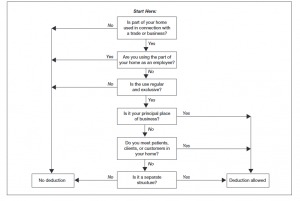Analysis of the Tax Cuts and Jobs Act (Trump/GOP Tax Plan)
Congress recently passed the most comprehensive tax reform in three decades.
And suddenly, I’m a popular guy.
People who would normally cross to the other side of the street when seeing a CPA approaching them, or who would avoid me at parties – fearing death by slow boredom – are now wanting to talk to me. I’m sought-after, I’m a cool guy, I’m an A- Lister, I’m…
OK, slow down Micah. Taxes are still boring to most folks and you didn’t become an overnight people magnet. But in my jesting, there is truth. Folks are seeking me out to ask three burning questions:
- What’s in the new tax bill?
- Is it good or bad?
- What does it mean for me?
So, three simple questions – for which there sadly, no quick and simple answers.
“But wait” you say. “This was supposed to be tax simplification! That’s what they said!”
Yes, “they” did. And no, it isn’t. Clocking in at approximately 1,100 pages long, and with more twists and turns than a cornfield maze, it is most definitely not simple. As to whether this is ultimately good or bad for you, I can answer with a confident and resounding … “maybe.”
Longtime readers will recall that I often like to begin my business articles with some song lyrics to set the stage – keying in on a word or line in the song that addresses that day’s theme. And as I pondered this matter and was thinking about songs, one word kept coming to mind that I wanted to find contained in lyrics: “confusion”
I thought about the classic Bob Dylan/Jimi Hendrix song “All Along the Watchtower” with the lines that seemed appropriate:
“There must be some kind of way outta here
Said the joker to the thief
There’s too much confusion
I can’t get no relief”
That one certainly works for today’s discussion – given that this tax bill adds plenty of “confusion” and for lots of people provides precious little of the tax “relief” that was promised. (And we could spend some fun time discussing who in the massive political mess that this turned into were the “jokers” and who were the “thieves.”)
As far as the bill itself, you may love it or hate it. You might be a winner or a loser under it. And you may think it will turn America into a utopian paradise, or conversely think will cause the entire world to catch fire and explode. But there is one thing that most people are not disagreeing on: this legislation does not simplify the tax code. The President initially promised tax returns so simple they could be done on a postcard and said that it would drive H&R Block out of business. I imagine most tax professionals across the country are rejoicing, because this legislation makes the tax code even more complex and convoluted than it already was.
(Side point: Would anyone with a modicum of sense have put sensitive financial information including their Social Security Number on a postcard had that pipe dream had come true?)
Historically, even minor changes in the tax code take a fair amount of time to fully understand and to strategize for. Given the scope of this legislation, accountants and tax attorneys – me included – will be digesting the changes and coming up with tax strategies for quite some time.
As such, this overview is not meant to be (nor could it be) a comprehensive guide to every caveat/nuance of the law. But it does cover the high points and makes it obvious how important good planning and strategy will be. So let’s get started. We’ll begin with changes to individual taxes and then cover businesses.
Note: These changes will not impact the tax return that you file this coming April covering the tax year 2017. They take effect January 1, 2018.
Individual Taxes
Doubling the Standard Deduction
One of the biggest talking points of the legislation was the (nearly) doubling of the standard deduction. For individuals the standard deduction increases $5,650 ($12,000 from $6,350) and increases $11,300 ($24,000 from $12,700) for married filers. That sounds great except for the fact that it is almost completely offset by:
The Elimination of Personal Exemptions
Under the old tax code you were able to claim a deduction of $4,050 for each person in your household. This was especially advantageous for people with larger households. This deduction was done away with under the new legislation. So on the surface that would be negative for parents, but is again somewhat offset by:
The Expansion of the Child Tax Credit
Previously, taxpayers were eligible for a credit of $1,000 per child in the household. This has been expanded to $2,000 per child, and a new $500 credit for other dependents in the household has also been added. The phase-out thresholds have also been raised so more high income families will be able to take advantage of the credits.
Inflation Index Adjusted
This change did not receive much fanfare, but in the long-term will likely be one of the most significant changes. Inflation-adjusted measures in the tax code are currently tied to the Consumer Price Index (CPI). The new rules are tied to “chained CPI” (C-CPI). This metric is generally considered to be more accurate, but it likely means tax increases. How?
Because while it is accurate, chained CPI is also a slower/lower measure of inflation. Just as an example, let’s say that you receive a 2% raise every year, but the C-CPI only goes up 1%. Your income increases are outstripping the inflation index. And very slowly and over time, you appear wealthier to the IRS and get pushed into higher effective tax brackets.
Elimination of the Alimony Deduction
For the past 75 years, alimony payments were tax deductible for the one paying and taxable for the one receiving. For anyone who gets divorced after 12/31/2018, this will no longer be the case. That means that not only will one spouse have to make the alimony payments to another, but they will still have to pay tax as if they still had that money. This is a huge shift and is likely to result in divorce settlements being even more contentious and complex, as it makes alimony payments all the more painful.
The real winners on this change? Divorce attorneys.
Elimination of Moving Expenses
If you moved for work, those expenses used to be tax deductible. And they were especially advantageous because they were “above the line” deductions that reduced your Adjusted Gross Income (AGI) and did not require you to itemize in order to take advantage of them. This deduction has been eliminated unless you are a member of the military.
Alternative Minimum Tax Threshold Increase
The Alternative Minimum Tax (AMT) runs parallel to the normal tax code and is designed to increase the tax wealthy people pay. Once people reach certain income thresholds, some of the deductions they were able to take previously (such as state and local taxes and home equity line interest) are disallowed.
One issue was that AMT was enacted in 1969, but did not begin to be adjusted for inflation until 2013. Because of this, an increasing number of middle class families have been paying it in recent years.
Under the old legislation, AMT began at $120,700 for individuals and $160,900 for married couples. The new plan increases those levels to $500,000 and $1 million respectively.
Reduction or Elimination of Certain Itemized Deductions
Just by doubling the standard deduction, fewer people will be itemizing. But the bill also reduces or eliminates several deductions which will make it even more difficult to itemize. Some key changes:
- Reduction in the state and local tax (SALT) deduction. Taxes paid to state and local governments (real estate, income tax, personal property tax, etc.) used to be completely tax deductible. This deduction has now been capped at $10,000 total. For some people this will not make much of a difference, but in states with high state income or high property taxes this will be especially painful.
- Reduction in the mortgage interest deduction. Interest payments on mortgages of up to $1 million were deductible under the old code. This limit has been reduced to $750,000.
- Elimination of all 2% of AGI miscellaneous itemized deductions. Under the old legislation, there were a number of miscellaneous itemized deductions available. In order to get any benefit, in aggregate they needed to exceed 2% of your AGI. All of these deductions have been eliminated. These deductions included:
- Unreimbursed employee expenses. If you were an employee and had a large amount of unreimbursed business expenses, you could deduct those costs. This was especially helpful for people in sales positions or ones that required a lot of travel/mileage.
- Investment advisory fees
- Safe deposit rentals
- Tax preparation fees
- Casualty and theft losses
- (Temporary) expansion of the out of pocket medical expense deduction. Up until 2013, medical expenses that exceeded 7.5% of your AGI were tax deductible. In 2013 this changed to 10% for most taxpayers. The new legislation reduces the threshold back to the 7.5% level for 2017 and 2018.
Removal of the Itemized Deduction Cap
Under current law itemized deductions began to phase out at income levels of $266,700 for single filers and $320,000 for married couples. The new legislation eliminates that cap entirely. This will obviously only affect certain relatively higher income taxpayers. But particularly for some very wealthy individuals it will be quite valuable, especially if they routinely give large amounts to charity since those deductions are no longer limited.
Individual Tax Rate Changes
The loss of all of those deductions is unfortunate, but (as seems to be a running theme with this law) this will hopefully be somewhat offset by the fact that tax rates for individuals have been reduced across most income levels.
| Single Taxpayers | ||||||
| Current Law | New Law | |||||
| 10% | $0 | $9,325 | 10% | $0 | $9,525 | |
| 15% | $9,326 | $37,950 | 12% | $9,526 | $38,700 | |
| 25% | $37,951 | $91,900 | 22% | $38,701 | $82,500 | |
| 28% | $91,901 | $191,650 | 24% | $82,501 | $157,500 | |
| 33% | $191,651 | $416,700 | 32% | $157,501 | $200,000 | |
| 35% | $416,701 | $418,400 | 35% | $200,001 | $500,000 | |
| 39.6% | $418,401+ | 37% | $500,001+ | |||
| Married Filing Jointly Taxpayers | ||||||
| Current Law | New Law | |||||
| 10% | $0 | $18,650 | 10% | $0 | $19,050 | |
| 15% | $18,651 | $75,900 | 12% | $19,051 | $77,400 | |
| 25% | $75,901 | $153,100 | 22% | $77,401 | $165,000 | |
| 28% | $153,101 | $233,350 | 24% | $165,001 | $315,000 | |
| 33% | $233,351 | $416,700 | 32% | $315,001 | $400,000 | |
| 35% | $416,701 | $470,700 | 35% | $400,001 | $600,000 | |
| 39.6% | $470,701+ | 37% | $600,001+ | |||
Estate Tax Exclusion Increase
The limit on the estate tax has once again been raised. In 2001, the exclusion (value an estate could be before it became taxable) was only $675,000 per person. That has been raised throughout the years to the point that in 2017 the exclusion was $5.49 million. In 2018 the exclusion more than doubles to $11.2 million.
Repeal of the Obamacare Mandate
Since 2014 individuals without health insurance have had to pay a penalty under the Obamacare/ACA mandate. In 2016 this was $695 per adult and $347.50 per child in the household. This has been repealed – effective 2019.
529 Savings Accounts Expansion
Under the old legislation, distributions from 529 savings accounts could only be used for higher education expenses. The new rule allows for funds to be used for K-12 private school tuition.
Permanent or Temporary?
There is some question as to whether or not these cuts will be permanent or temporary. Many are set to expire in 10 years, at which point they would revert to the old rates and regulations. Congress could of course extend them to stay in effect longer than that.
Business Taxes
Pass-through Income Tax Rate Deduction
This is one of the more complicated provisions, but also the one that provides the most opportunity for strategic planning. Currently, pass-through entities such as S-Corps are taxed at the tax rates of the individual shareholders.
The new legislation allows for a 20% deduction on income received from pass-through entities. This has huge potential for small-business owners.
The rules are complex, and as with everything tax related, there are limitations. The deduction is capped at the greater of:
- 50% of wages paid OR
- 25% of wages paid plus 2.5% of depreciable capital assets
There are also income limits for professional service businesses (such as lawyers and sadly, accountants), with the phase-out beginning at $157,500 for single taxpayers and $315,000 for married taxpayers.
Not all companies and taxpayers will qualify, but the potential of a 20% deduction is absolutely gargantuan. Companies that do not currently qualify will likely attempt to restructure or merge with other companies in order to get this tax break.
Note: There are deadlines for forming/electing certain pass-through structures. If you need specific guidance on this, ask me.
Now in some cases businesses may restructure to C-Corporations because of:
The Reduction of the Corporate Income Tax Rate
Unlike pass-through entities (which do not pay tax themselves but pass all of the income to their individual shareholders), large corporations (C-Corps) do pay tax. The top tax rate got slashed from 35% to 21%, which is a huge boon for these companies.
The bill also eliminated the corporate Alternative Minimum Tax.
Now, C-Corps do have major downsides which is why most small businesses are not structured that way. Not only does the corporation itself pay tax, but any distributions (dividends) paid to shareholders are taxable to those shareholders. So for most people, this still will not be a preferred setup.
But with the top corporate tax rate dropping to 16% lower than the top individual tax rate (21% vs. 37%) and along the elimination of corporate AMT, it is quite feasible to imagine situations where C-Corps become much more a viable option than they were a few weeks ago.
Business Loan Interest Deduction Limited
Interest on business loans has been fully deductible without any limit. Under the new legislation, the deduction would be limited to 30% of a business’s earnings before interest, taxes, depreciation, and amortization (EBITDA).
Net Operating Losses Reduced
Under the old rules, net operating losses from business operations could be carried back two years and carried forward 20 years. The new legislation eliminates carry backs. Carry forwards are still allowed, but are limited to 80% of taxable income. Businesses with wide swings in profitability year-to-year are hurt by this
Elimination of the Domestic Production Activities Deduction
The Domestic Production Activities Deduction (DPAD) was a write-off for any business who made things in the US and provided up to a 9% deduction for qualifying activities. Farmers, domestic manufacturers, construction companies, and others were able to take this write-off. This has been eliminated by the new legislation. If you are involved in any of these business, this not good news at all.
Research and Development Expenditures Adjusted
In one of the last drafts of the bill, the R&D credit was essentially killed. In the final version that language was removed. The one negative adjustment is that instead of being 100% deductible in the year they are incurred (as was the case with the old legislation), R&D expenses will now have to be taken over a five or more years. This provision is effective 2022.
Historic Rehab Credits Payout Adjusted
Buildings in historic districts have been eligible to receive a 20% credit on any qualifying expenses. This (along with accompanying state credits) have been a major incentive to developers to rehabilitate older structures.
It appeared that this credit was going to be eliminated entirely. The credits have survived, but instead of being paid out in a lump sum will be paid out over a 5-year period.
The fact that they survived is very good news for developers, but the extended payout period is not inconsequential and it could hurt. Under current law, developers leveraged those payouts (oftentimes by syndicating the credits) to fund their next project. In other words, since these credits are transferable, the developer would sell them to someone who needed a tax break and get money in hand to move on to the next project. The 5-year payout provision will make these credits less appealing to potential buyers and make it harder for developers to resell them.
Conclusion
Are you confused yet? You should be. And this short article doesn’t even begin to scratch the surface on any of these items. Nor does it even touch the plethora of other miscellaneous changes such as the change of taxes to multinational companies, the new excise tax on large college endowment funds, limits on executive pay at non-profits, sexual harassment settlements no longer being tax deductible (why were they before?), or an adjustment to the excise tax on certain alcohol manufacturers. This legislation is nearly 1,100 pages of dense, complex policy – in addition to the 74,000 pages of tax code that already existed.
Now more than any time in the past 30 years there are significant tax related risks and opportunities. Making the right moves can make you a tremendous amount of money. And making the wrong ones can cost you dearly. Make sure you talk to your tax advisor to reevaluate your situation and strategize properly. There is a significant chance that yesterday’s tricks won’t work the same way they used to.
So…
Tax reform? In a sense
Tax “simplification”? Not on your life.
The “Tax Cut and Jobs Act”? Maybe, maybe not.
Mass confusion? Absolutely.
Here at my tax planning and business consulting company – Micah Fraim, CPA – we have decided to affectionately refer to it as: “The CPA Job Security Act.”
Thank you, Congress.
Any accounting, business, or tax advice contained in this communication, including attachments and enclosures, is not intended as a thorough, in-depth analysis of specific issues, nor a substitute for a formal opinion, nor is it sufficient to avoid tax-related penalties.





Pingback: Does Crypto Qualify for 1031 Exchanges? - Crypto Tax CPA - Micah Fraim
Pingback: Do I Qualify for Crypto Tax Trader Status? - Crypto Tax CPA - Micah Fraim
Pingback: Are Crypto P2E (Play-To-Earn) Gaming Rewards Taxable?